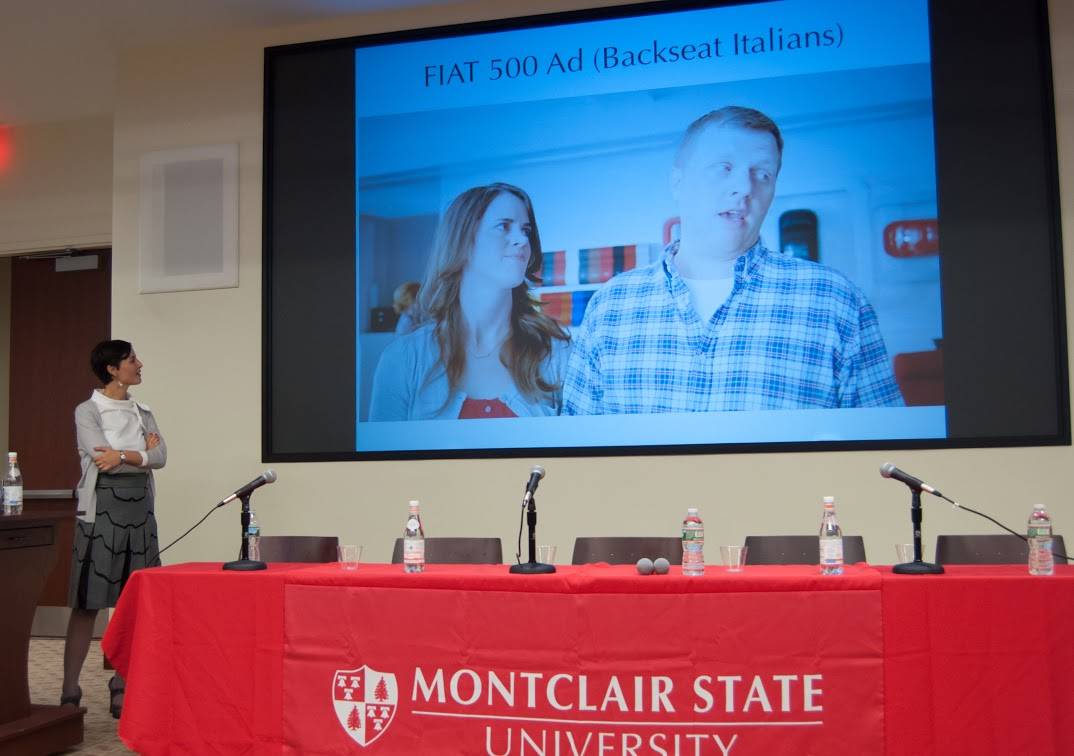Who is Learning Italian in America?
The Come sta l’italiano? - How's Italian Doing? conference convened in the Feliciano School of Business at Montclair State University. Dr. Teresa Fiore, the Theresa and Lawrence R. Inserra Endowed Chair, began the evening with a few opening words. She declared that this event is special because rather than discussing Italian culture, it focuses specifically on the state of Italian studies as a degree program in higher education.
After offering his thanks to the audience and to the university, Francesco Genuardi, the Italian Consul General, indicated that a high number of students took the Italian AP exam, which proves the great interest in the study. The Italian Consulate plans to continue to promote the language, as the Italian government feels the study of Italian in America is important.
Dennis Looney, who taught Italian for almost 30 years at the University of Pittsburgh, was the first guest speaker to address the audience. Upon leaving Pittsburgh, he began working for the Modern Language Association (MLA). One of his main responsibilities is completing a triennial language enrollment survey, which is a census of all of the students enrolled in language classes nationwide.
The survey reveals that from the 1960s on, language enrollment has increased overall in the States. Italian grew dramatically over the decades largely due to the fact that Italy is the most popular study abroad location for Americans. In 1974, 30,000 people studied Italian. By 2009, Italian studies grew to 80,000 students; however, in 2013 the number of students dropped to 71,000, a downturn of about 10%. Between 1960 and 2013, studies of Italian have grown 543%. Although this expansion appears to be positive, a point of contention is that students enrolled in introductory Italian courses do not continue on to higher-level courses. According to Looney, “For every eleven students that study in Italian 1 through 4, there’s one student who’s studying in Italian 5 through 8.” Despite these trends, Looney believes that students should continue to study Italian because humanities degrees are important for intrinsic reasons: learning one’s cultural identity, reading, writing, comprehension, and cross cultural communication skills.
The second speaker of the evening was Wellesley College’s David Ward, a professor of Italian and an author of four books. Ward believes that the economic recession of 2009 is partially responsible for the downtick in the study of Italian. Funding for programs is crucial for their survival. The State Department doesn’t consider Italian a “critical language,” therefore, it doesn’t give Italian the same support that it does to others deemed critical. As schools introduce different foreign language options, Italian now competes with languages like Arabic, Hindi, Urdu, Korean, and Portuguese. Some students are ditching the humanities all together in favor of degrees in science. However, in 2014, Wellesley developed an experiemental, non-for-credit, online Italian course via the edX platform. The course was offered to incoming freshmen, and it was considered a SPOC (small online private course). Roughly 20% of the incoming freshmen signed up for this class. As a result of its success, the class was offered once again in the summer of 2015. Since then it has evolved from a SPOC into a MOOC (massively open online course). In fact, as of a few weeks ago, 51,000 students worldwide had enrolled in it. Ward concluded that online language courses are the way of the future.
Finally, Lucia Pasqualini, the Head of office for the Promotion of Italian Language abroad at the Ministry of Foreign Affairs and International Cooperation in Rome, offered her perspective on the matter. Pasqualini lived in the US as Deputy Consul at the Consulate General of Italy in New York for four years, and during her time here she was able to see that Italian language in America: “sta bene… Sta molto bene!” She also saw shops “with nothing to do with Italy with writing in Italian.” In order to illustrate her point, she showed a Geico commercial with children playing in a pool while calling out “Marco Polo.” She also showed a comedic FIAT commercial in which a young couple buys a FIAT, and the car comes with “backseat Italians.” These Italians slowly but surely introduce the couple to the Italian lifestyle. By the end of the commercial, the couple is speaking to each other in Italian, and they have a better understanding of the Italian culture. Pasqualini believes that, on a small scale, this ad demonstrates that, “If you learn a language, you learn a culture.” She also states that this advertisement shows that “Italian is cool” because FIAT would not have produced the ad if they expected it to fail.
Pasqualini concluded, “I truly believe that the future is multilingual and bilingual.” She stated that learning a language not only helps to develop and understand other cultures and people, but also to improve cognitive function; therefore, the benefits are multidimensional. Her advice for people who want to learn multiple languages is to start with a language you’re passionate about and subsequent languages will come much easier.
If you are interested in learning Italian, please visit il Portale della Lingua Italiana for more information.
To see Il Design Parla Italiano >>>








































i-Italy
Facebook
Google+
This work may not be reproduced, in whole or in part, without prior written permission.
Questo lavoro non può essere riprodotto, in tutto o in parte, senza permesso scritto.